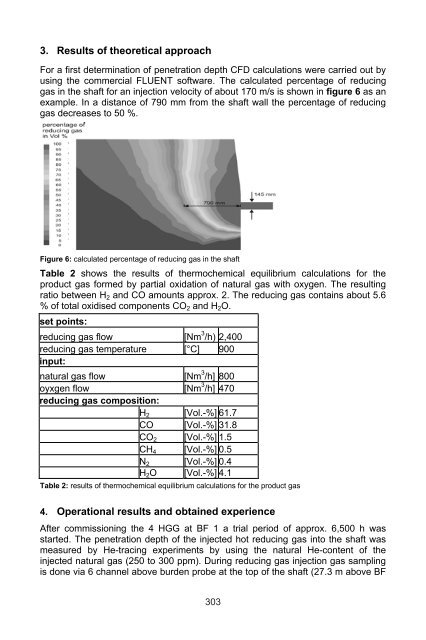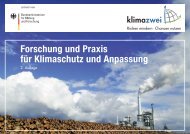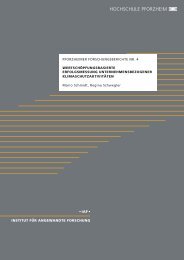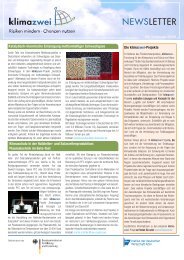Development of injection of reduction gas into the blast ... - klimazwei
Development of injection of reduction gas into the blast ... - klimazwei
Development of injection of reduction gas into the blast ... - klimazwei
You also want an ePaper? Increase the reach of your titles
YUMPU automatically turns print PDFs into web optimized ePapers that Google loves.
3. Results <strong>of</strong> <strong>the</strong>oretical approach<br />
For a first determination <strong>of</strong> penetration depth CFD calculations were carried out by<br />
using <strong>the</strong> commercial FLUENT s<strong>of</strong>tware. The calculated percentage <strong>of</strong> reducing<br />
<strong>gas</strong> in <strong>the</strong> shaft for an <strong>injection</strong> velocity <strong>of</strong> about 170 m/s is shown in figure 6 as an<br />
example. In a distance <strong>of</strong> 790 mm from <strong>the</strong> shaft wall <strong>the</strong> percentage <strong>of</strong> reducing<br />
<strong>gas</strong> decreases to 50 %.<br />
Figure 6: calculated percentage <strong>of</strong> reducing <strong>gas</strong> in <strong>the</strong> shaft<br />
Table 2 shows <strong>the</strong> results <strong>of</strong> <strong>the</strong>rmochemical equilibrium calculations for <strong>the</strong><br />
product <strong>gas</strong> formed by partial oxidation <strong>of</strong> natural <strong>gas</strong> with oxygen. The resulting<br />
ratio between H2 and CO amounts approx. 2. The reducing <strong>gas</strong> contains about 5.6<br />
% <strong>of</strong> total oxidised components CO2 and H2O.<br />
set points:<br />
reducing <strong>gas</strong> flow [Nm 3 /h) 2,400<br />
reducing <strong>gas</strong> temperature [°C] 900<br />
input:<br />
natural <strong>gas</strong> flow [Nm 3 /h] 800<br />
oyxgen flow [Nm 3 /h] 470<br />
reducing <strong>gas</strong> composition:<br />
H2 [Vol.-%] 61.7<br />
CO [Vol.-%] 31.8<br />
CO2 [Vol.-%] 1.5<br />
CH4 [Vol.-%] 0.5<br />
N2 [Vol.-%] 0.4<br />
H2O [Vol.-%] 4.1<br />
Table 2: results <strong>of</strong> <strong>the</strong>rmochemical equilibrium calculations for <strong>the</strong> product <strong>gas</strong><br />
4. Operational results and obtained experience<br />
After commissioning <strong>the</strong> 4 HGG at BF 1 a trial period <strong>of</strong> approx. 6,500 h was<br />
started. The penetration depth <strong>of</strong> <strong>the</strong> injected hot reducing <strong>gas</strong> <strong>into</strong> <strong>the</strong> shaft was<br />
measured by He-tracing experiments by using <strong>the</strong> natural He-content <strong>of</strong> <strong>the</strong><br />
injected natural <strong>gas</strong> (250 to 300 ppm). During reducing <strong>gas</strong> <strong>injection</strong> <strong>gas</strong> sampling<br />
is done via 6 channel above burden probe at <strong>the</strong> top <strong>of</strong> <strong>the</strong> shaft (27.3 m above BF<br />
303







